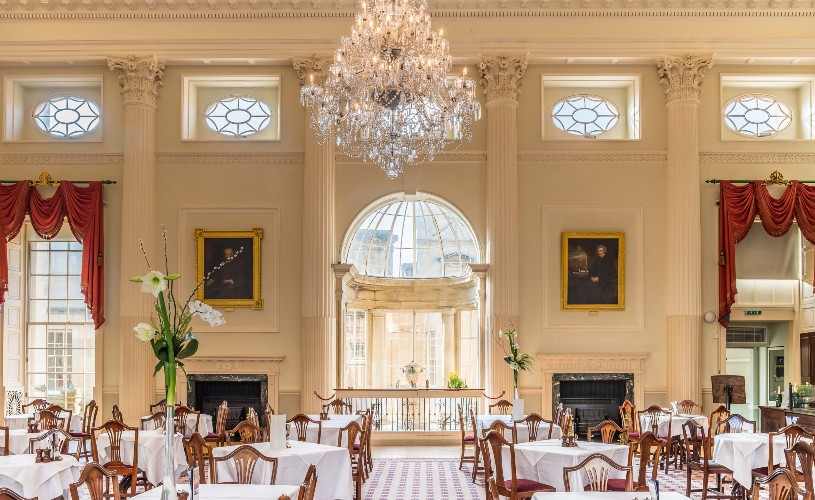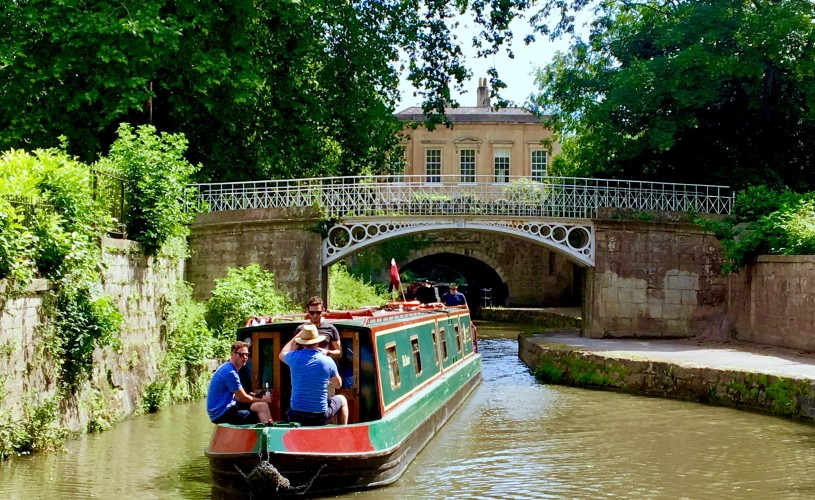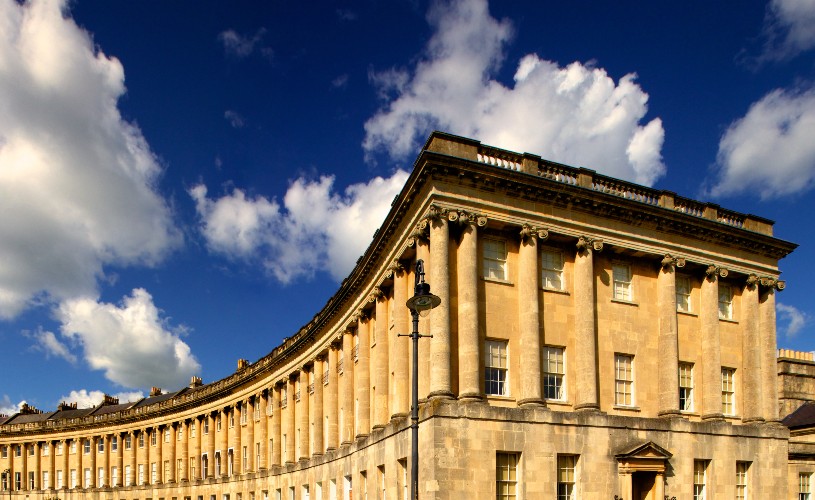Did you know that all of Jane Austen’s six novels mention Bath, and two of them (Persuasion & Northanger Abbey) are based in this World Heritage city? We often see her characters running off to find love, take the waters, or revel in its social activities. Here, Alice Hodges from The Jane Austen Centre takes us through the real-world story of the author's life in the city:
Bath was undoubtedly a constant source of inspiration for Jane, with her own experience of the city reflected in her works. Thousands visit every year to follow in her footsteps and learn about how the popular spa resort and centre of fashionable society influenced her life and writing. So, where did the story of Jane Austen and Bath originate?
While many assume that Jane’s connection with Bath began when she moved to 4 Sydney Place in 1801 after her father’s retirement, the Austen family’s history with the City actually dates back further. Jane’s parents were married at St Swithin’s Church in 1764, and Jane herself visited in 1797 and 1799, lodging with her mother and sister-in-law at 13 Queen Square in 1799 while her brother took the waters for his health. Before moving into Sydney Place, she also stayed with her aunt and uncle, the Leigh-Perrots, at No.1 The Paragon. These short visits had a lasting impact on the young Jane Austen, inspiring her to write Northanger Abbey about Catherine Morland’s first visit to Bath and her “eager delight” at all it offered.
Like Catherine, Jane enjoyed excursions to the countryside, balls, and concerts. The Pump Room, Sydney Gardens, and The Assembly Rooms provided great entertainment for Jane and her characters. These landmarks are must-sees for avid Janeites wishing to immerse themselves in the Regency period. When Jane was not busy indulging in Bath’s social scene, she used her time to revisit Northanger Abbey, then named Susan, and started writing a new novel called The Watsons, which remains unfinished. Although her literary output was small during her stay here, she used her observations of the city as a muse.

Image: The Pump Room
After the lease on 4 Sydney Place expired, the Austen family moved to lodgings in Green Park Buildings in 1804. This began a period of turbulence, as they were forced to relocate again in 1805 after Jane’s father, Rev. George Austen, passed away. He is buried in St Swithin’s Church, the same place he celebrated his marriage 41 years earlier. After his death, Jane, her mother, and her sister moved to the first floor of 25 Gay Street with a lodger.

Image: Sydney Gardens
25 Gay Street is now a dental surgery, but visitors eager to know what Jane’s time in this Georgian townhouse would have looked like can visit The Jane Austen Centre, situated just a few doors down from where Jane lived. Here, actors playing Jane’s characters dressed in period costumes give you a flavour of what Regency Bath would have looked like. You can write with a quill, try on Regency costumes, or visit the Regency Tea Room for a delightful afternoon tea. The Centre also organises the annual Jane Austen Festival, which attracts visitors from across the world for ten days of Austen-related events, including balls, a Grand Promenade, theatre shows, and dance workshops. What better way to step into Jane’s world and celebrate her life?
Moving to the less agreeable Trim Street before leaving Bath in 1806, Jane Austen looked back at her time in Gay Street with fond memories, even housing the Crofts on this street in her second Bath novel, Persuasion. In this book, she depicts different places in the city to support her social commentary about class and status. Why not take a trip to the Gravel Walk or Union Street, where lovers Anne Elliot and Captain Wentworth rekindle their romance? Or perhaps visit the Royal Crescent, which was used as a filming location for the 2022 Netflix adaptation of Persuasion.

Image: The Royal Crescent, credit Nick Smith
Whichever road you take in Bath, there are plenty of references to her life and novels for you to enjoy. Although Jane only lived here for a few years, she left a rich legacy, and her presence is still felt in the city over 200 years after her death. It is perhaps no wonder that she is considered Bath’s most famous resident!
Read more
Related
Comments
Comments are disabled for this post.





